Featured Articles
7 Knots Every Eagle Scout Knows
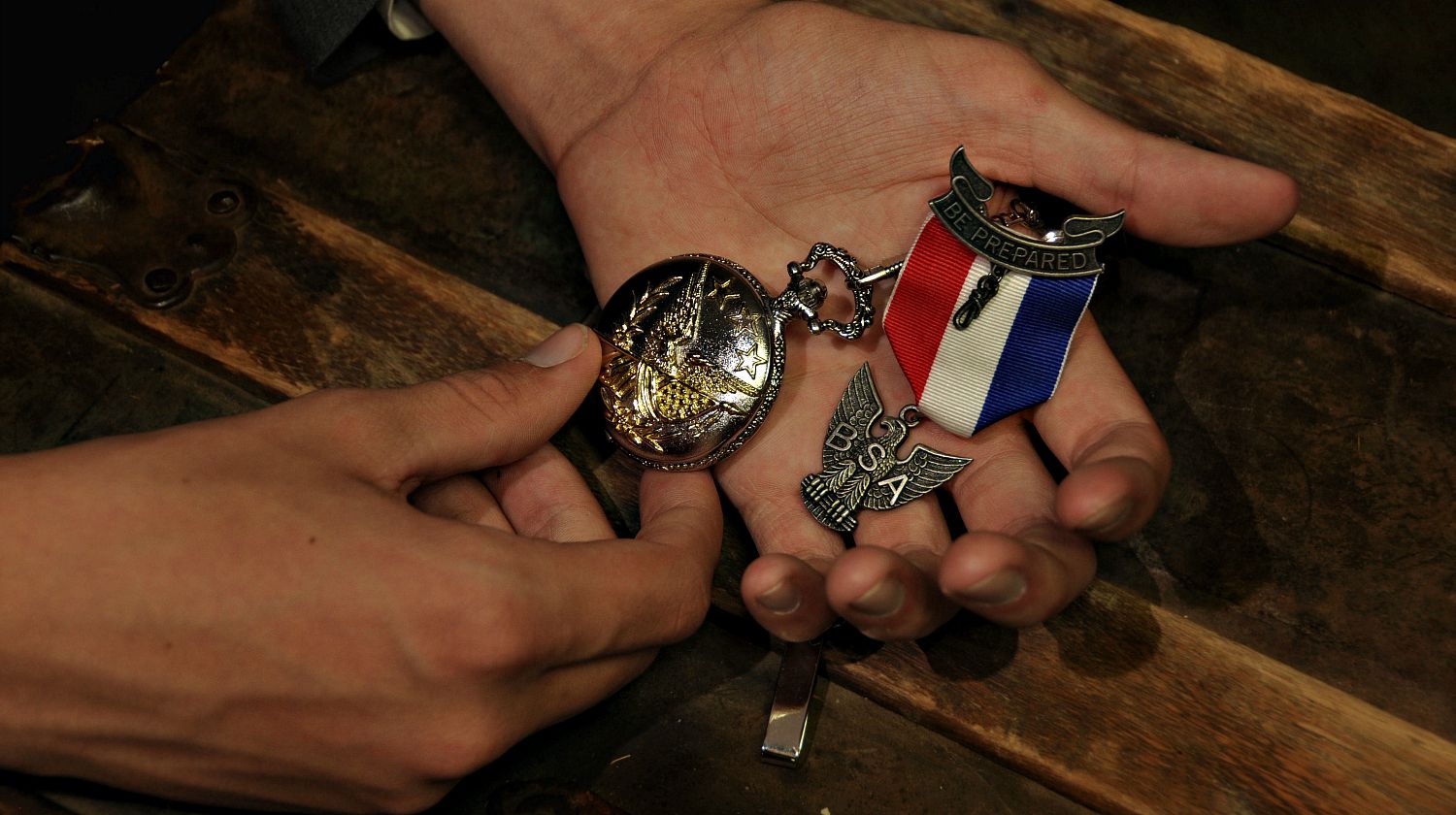
Learn to tie basic knots and add up to your survival skills in the outdoors or in a real survival situation.
RELATED: 40 Essential Knots Every Survivalist Needs To Know
7 Knots Every Eagle Scout Knows and So Should You
Basic Knots
My assistant patrol leader of the Boy Scouts Of America was the first to lead me to the pioneering section of the handbook, where he turned to the page about tying knots. He gave me a small speech on how I needed to crawl before I could walk.
As I progressed through the ranks in the Boy Scouts, I learned to tie many different rope knots. Once I attained the rank of Eagle Scout, I began teaching at Boy Scout summer camp.
But as you may have guessed by now, my favorite place to work was at the Pioneering Station. There are seven types of knots I learned on my trail to becoming an Eagle Scout.
After teaching countless scouts of all ages and skill levels, one thing seemed to hold true. Anyone that took the time to learn them would be good to go for most projects in the outdoors.
1. Square Knot
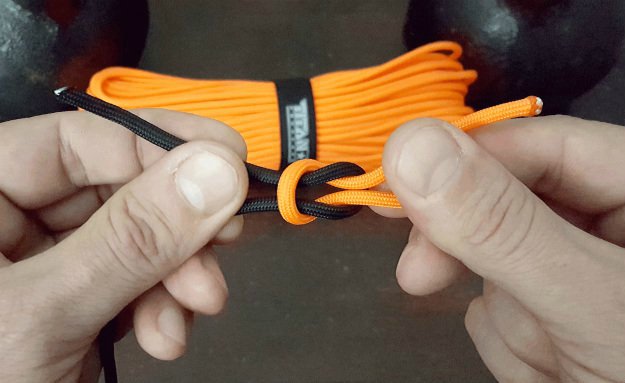
The square knot was originally taught to me as a way of binding two ropes together that were of equal diameter. What I do like about the square knot is its ability to make a great first-aid knot for tying cravats and bandages.
It cinches well with items such as a shemagh and bandannas. It also comes apart rapidly when needed. All you have to do is pull on the two ends and slide the knot through.
2. Sheet Bend Knot
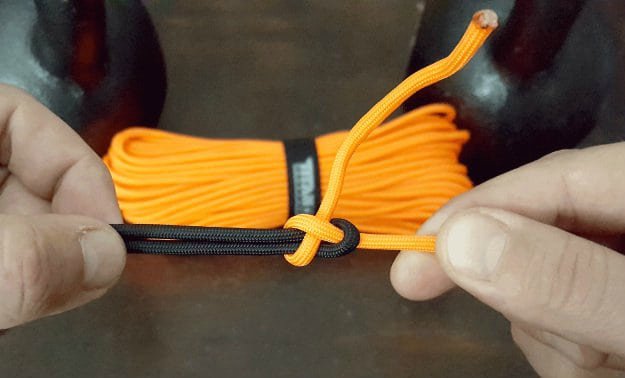
Do you know some fishing knots? Used to tie two ropes that were not of equal diameter, the sheet bend would be used in bending ropes to sails or sheets.
It is also a great knot to use for mending fishing nets that have come apart. As long as both ropes are under a load (tension from opposite ends) the sheet bend is certainly a capable knot for the job.
3. Sheep Shank Knot
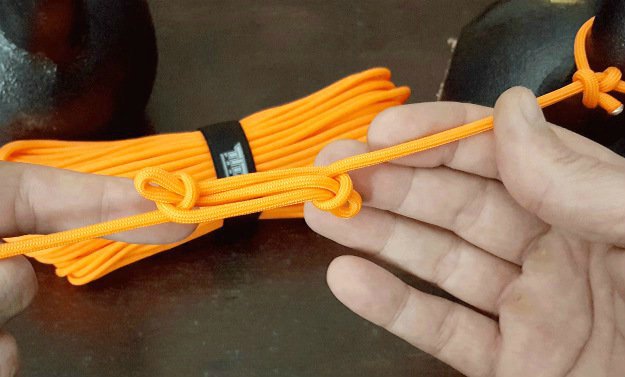
With the use of the sheep shank knot, you can shorten the length of your rope and also use it to remove excess slack. Keep in mind this knot will come apart if both ends of your rope are not taut.
RELATED: Paracord Knots And Hitches | How To Make Paracord Hitches
4. Clove Hitch Knot
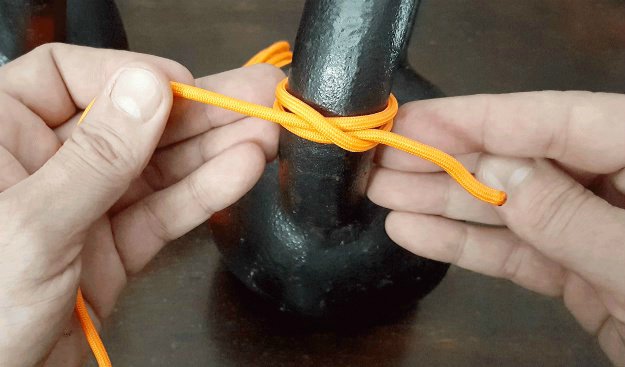
A clove hitch can be used to tie off the running end of your rope. If you need to adjust your rope, a clove hitch is a good knot to utilize for that purpose.
However, my main purpose for the clove hitch is when I am lashing. Lashing is used to join structures together using rope such as:
- Scaffolding
- Fences
- Building shelters
- Pretty much anything else you can conjure up
The clove hitch is key because it is used to begin and even end various types of lashing. The four types of lashing I use the clove hitch knot for are round, square, tripod, and shear lashing.
5. Bowline Knot
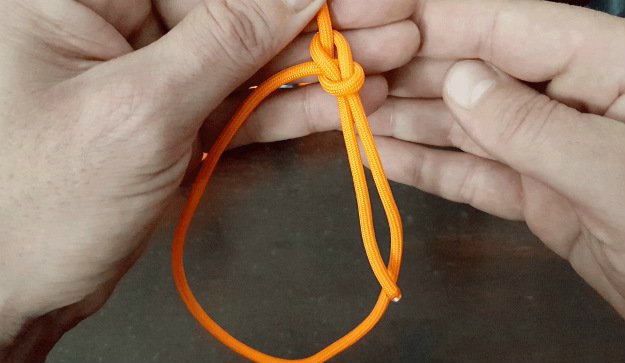
The bowline knot was taught to me as a rescue knot which is also a simple knot to tie. You form the letter “b” with one end of the rope.
You then grab the other end, picture a rabbit coming out of the hole in the “b,” he then goes around the tree “stem of letter b,” and back into the hole of the letter “b.” It is a bit easier to tie the bowline with two ends of the rope.
6. Taut-Line Hitch
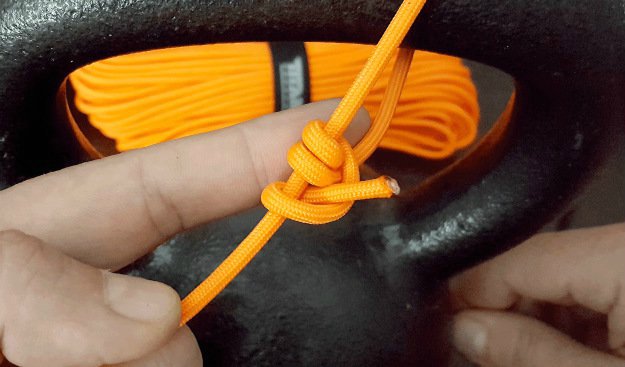
The taut-line hitch is an adjustable knot that is viable for maintaining tension on your rope. Because of that feature, it makes a great knot for cinching down your tent lines.
Using that same principle, I also use the taut-line hitch for tying down my tarps and rain flies. The fact it is adjustable makes it ideal for repositioning your shelter or other gear used for protection from the elements.
Instead of having to re-tie your knot, especially in bad weather, you can just quickly adjust your taut-line hitch.
7. Timber Hitch
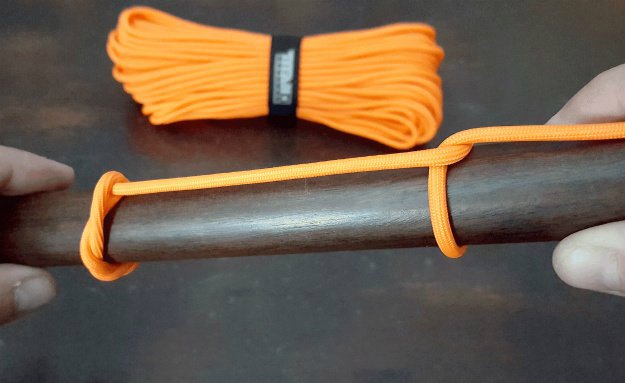
The timber hitch is another knot I find myself using often while I’m in the field. It is useful for me when I am dragging big logs to my campsite.
This is key when I need serious fuel for my campfires. With the use of the timber hitch, I save time and energy by getting my fuel to my saw and ax area in one maneuver.
The timber hitch also plays a big role in lashing. When using diagonal lashing for my projects, it begins with the timber hitch.
Click here to enlarge
Coach Helder shares a video demonstration on the 7 knots every eagle scout should know:
I have since added many useful knots to my toolbox… But it all started with these seven on my trail to becoming an Eagle Scout. When preparing for emergency situations, the more skills you have, the less gear you will need.
In addition, the more skills you learn now, such as with pioneering, the better chance you have of surviving when SHTF. Just like any skill, knot tying and pioneering skills are perishable.
Practice every chance you get and share your knowledge with your loved ones. Take it from me… The more you teach, the more you will learn!
Do you have more knot-tying ideas to share? Please share them in the comments section below!
UP NEXT:
- Best Knots For Camping And Survival
- Tie it All Together with These 9 Survival Knots
- 80 Tea Tree Oil Uses | Essential Oils For Survival
Follow us on Facebook, Instagram, Twitter, Pinterest, and Tumblr!
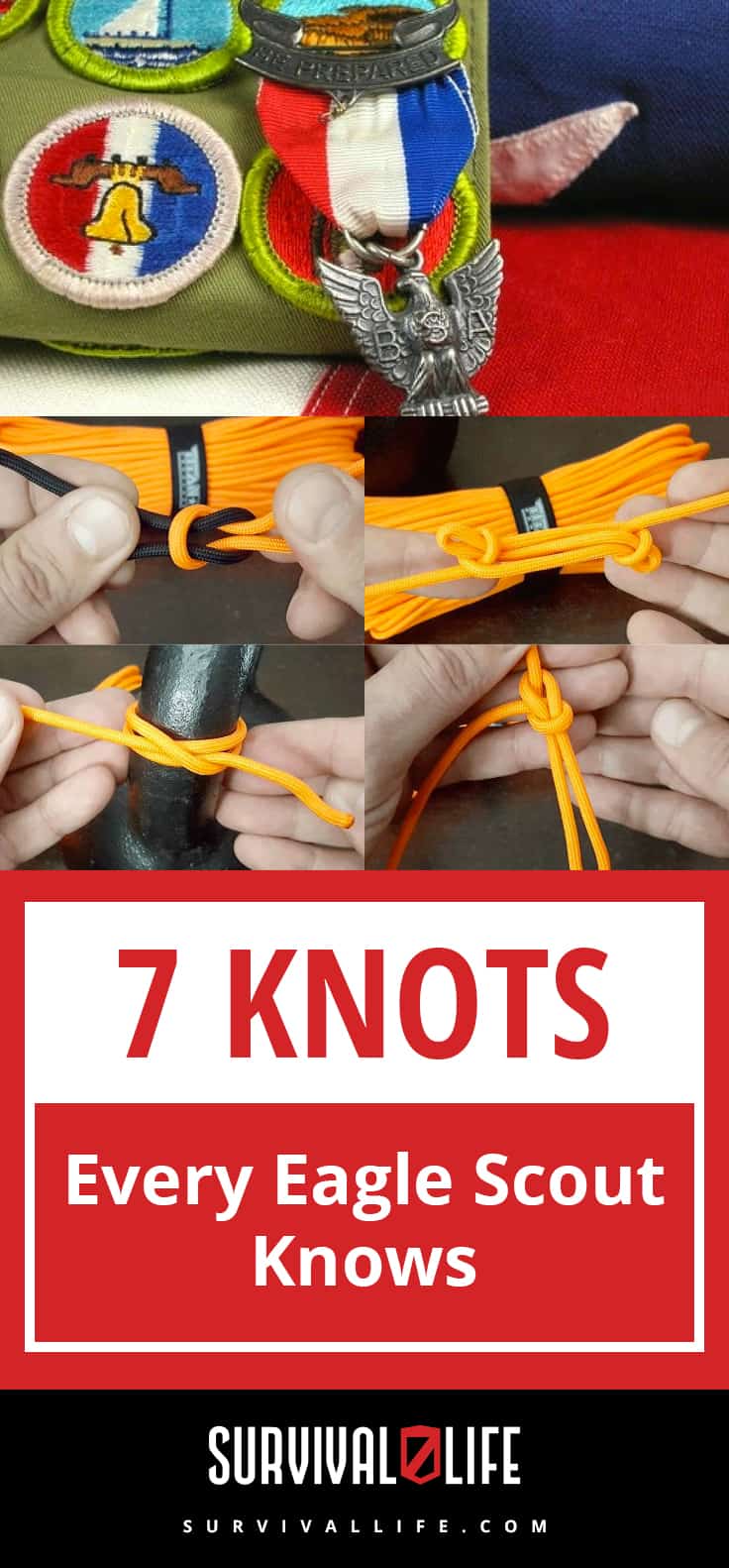
Editor’s Note: This post was originally published in March 2017, and has been updated for quality and relevancy.
-

 Do It Yourself7 months ago
Do It Yourself7 months agoParacord Projects | 36 Cool Paracord Ideas For Your Paracord Survival Projects
-

 Do It Yourself9 months ago
Do It Yourself9 months agoHow To Make Paracord Survival Bracelets | DIY Survival Prepping
-

 Do It Yourself9 months ago
Do It Yourself9 months ago21 Home Remedies For Toothache Pain Relief
-

 Do It Yourself10 months ago
Do It Yourself10 months agoSurvival DIY: How To Melt Aluminum Cans For Casting
-

 Exports8 months ago
Exports8 months agoAre Switchblades Legal? Knife Laws By State



Coach Helder
March 12, 2017 at 10:42 AM
If I can be of any further assistance, please do not hesitate to comment.
Thank you,
-Hg
jr
April 16, 2017 at 10:06 PM
The Alpine Butterfly is another tremendously useful knot. You can quickly tie it in the middle of a rope, and it won’t fail as you hang things on it, use it to pull things, use it for climbing footholds etc. A variant can also join two ropes.
Coach Helder
April 16, 2017 at 10:10 PM
Thank you for the info; I appreciate you taking the time to share your knowledge.
-Hg
Pingback: Springtime Recipes For The Survivalist Chef
Jack
August 29, 2019 at 11:36 AM
Coach, A mind jogger. FEI The bowline is also a knot for lifesaving use. Doubling it, (the Double Bowline) by taking the end around your back and to in front; When you reach the length of rope, grasp there bending it over and grasping the doubled over rope. Drop the end, and pull the doubled loop around your back until it’s in front, Tie the bowline using the doubled over end, over a doubled line. Now there should be two loops. One for around your back and the other around below the butt at the top of the thighs. It becomes a supportive seat to pull some up out of a dangerous place. Everyone should be able to tie THIS one with one hand, using each. You might never need to…..but if you do! Don’t DIE for “NOT” knowing a Knot. I have used it twice in my 71 year life…. but in helping someone else.
Pingback: How To Tie A Square Knot | Step-By-Step Instructions | Survival Go Bag